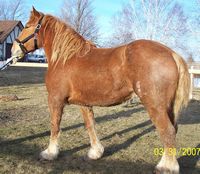Iplayfarmer said:I read the article. Great explanation!
Here's my question about Horsepower...
How come my old '69 John Deere 140 at 14 HP seems to out work the neighboor's shiny new 20 HP Craftsman? There's got to be a difference in measuring Horsepower there.
There are a few answers to that question. The first is that hp is and has been rated many different ways. For example back in the 70's and 80's a Johnson 15 hp outboard motor was EXACTLY the same engine as the 9.9 hp. The only difference was a $6 jet in the carb. One jet allowed that particular engine to turn 5500 RPM and produce 9.9 hp while the other allowed 7500 RPM to produce 15 hp. Keep in mind that you basically have an engine that is assigned a number or hp. Run that same engine at different RPM's and you will have to assign it a different number. As stated earlier "HP sells cars....". Manufacturers run their engines way up to get lots of HP so they can assign the engine a large number and give the illusion of power. Problem is, many time the claimed HP is produced at an RPM that is run on a test bench and will never be seen again by that engine. In short the engine will never run in a manner to produce the claimed hp. Your JD was most definitely rated differently than the craftsman.
As for your JD versus the Craftsman. Your JD has an old K series Kohler which is all cast iron. That engine weighs a ton. I have 3 old Cub Cadets 12,14,16 hp with the same series engines. The cast iron flywheel, heavy parts, etc. mean that you have LOTS of heavy rotating mass= TORQUE!!!! Your neighbors crapsman has an all aluminum engine with a high (possibly unrealistic- see above) hp rating. Your JD will outwork, outpull, etc that crapsman all day long. The other bonus is that 40 years from now your JD will still be running and the crapsman will have been made into beer cans.
Sorry for such a long post.

